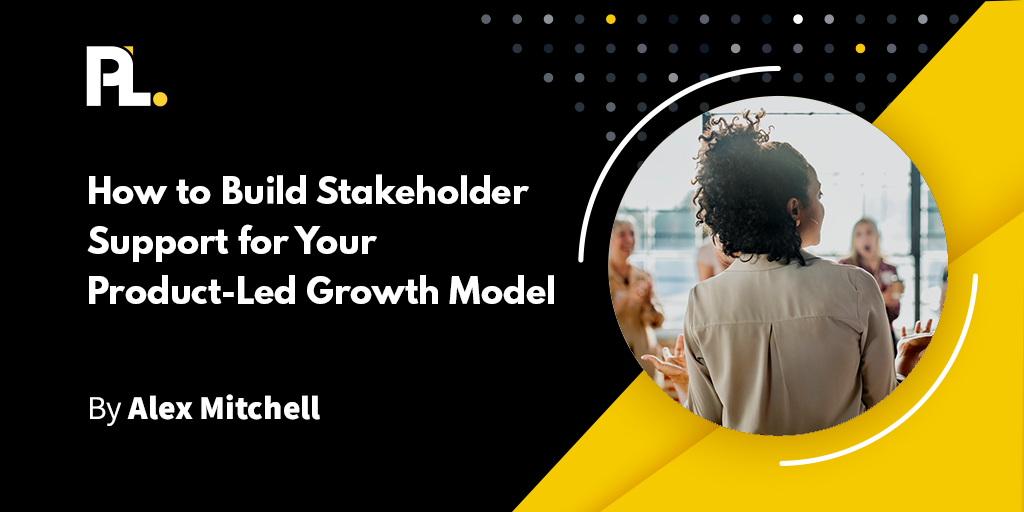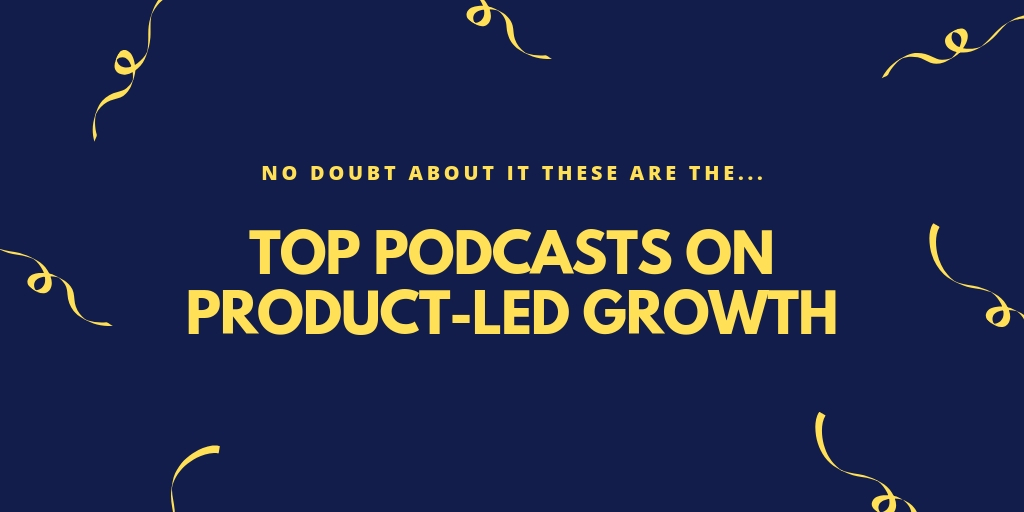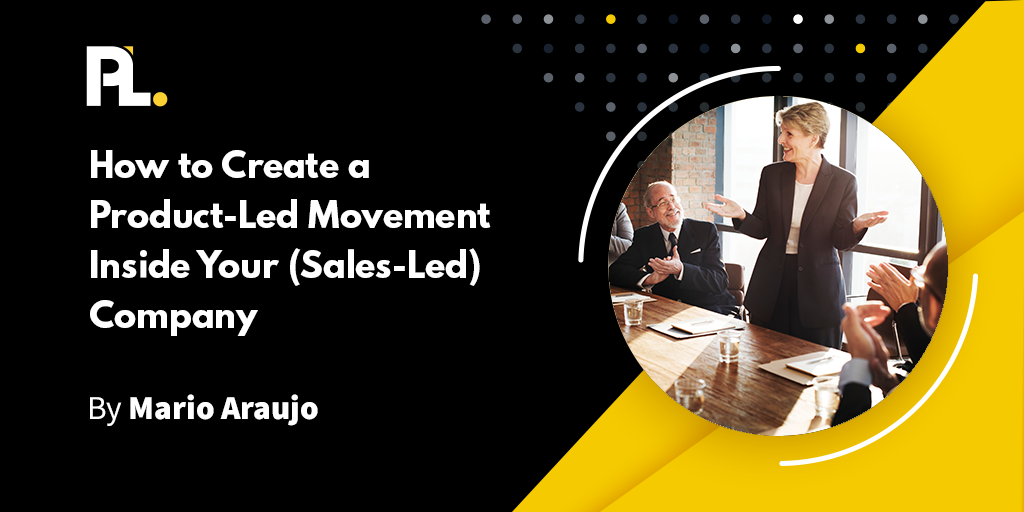
Vendasta, like many companies, did not start out with a product-led growth model.
We found our way to product-led growth through a trial-and-error learning process. If we could start all over again, we would have chosen to focus on it from the start.
That’s because it has given us so much success today.
So how did we end up deciding to focus on this model? This article will tell you a bit more about our journey to adopting PLG.
- How Vendasta got started with a sales approach.
- Why Vendasta decided to become product-led.
- The systems that developed from the transition.
https://youtu.be/EQ0LurNSumY
What is Vendasta?
Small business owners have a very fragmented experience when they're shopping for SaaS solutions. They’re usually too busy running their business to invest much time and energy into it. So they turn to an expert instead—51% of small to medium-sized businesses purchase SaaS solutions via Cloud Brokers.

Vendasta provides a platform for these Cloud Brokers, also known as experts.

We operate through white-label sales, so the only way we grow is through our partners’ growth—when these experts sell solutions to their small local business clients.
How Vendasta Got Started with a Sales Approach
Early on in Vendasta’s history, we believed we could get to market quicker by partnering with people who had existing relationships with small businesses.
So we started with an enterprise sales model first.
At the time, it was a good move because it helped to fund our development. It allowed us to scale the business to tens of thousands of small and medium-sized businesses.
As we developed our solution set, we began to see common threads across all of our partners and the challenges they were experiencing.
These challenges were not from having enough SaaS solutions to sell, but rather all the in-between stuff. Tasks like fulfillment and billing became complicated and challenging for our experts.
Once we realized this, we made a critical decision to stop investing in our core solutions and instead made the leap to become a platform company.
Why Vendasta Moved to Product-Led Growth
We had these main reasons we turned to a product-led growth model:
- We couldn’t effectively reach a cohort.
- Our current customers also needed it.
- The market is moving that way.
Let's dig into them a little bit.
1. We couldn’t effectively reach a cohort of customers
As an enterprise solution, we had a lot of large customers, but as we started to look for a product-market fit for the new platform we found an entirely different market of small businesses.
While the large enterprises could afford to do technical integrations and build their own billing portal and integrate with Marketo and Salesforce, these smaller customers didn't have the technical resources they needed.
So we started to diversify our market a little bit.
As we started to grow, we watched our unit economics very closely. The large customers had a strong lifetime value—we're deeply integrated with them. It’s a longer sales cycle and a higher CAC, but once we're in, the churn is low and the lifetime value is very, very healthy.
The demand was high for smaller businesses, but the unit economics were broken. We would try to get their business with a sales cycle and high-touch onboarding. But it wasn't working.
The CAC for this new base didn’t balance their willingness to pay. They couldn't afford hundreds of thousands of dollars of commitment throughout the year.
We asked ourselves: how do we scale this?

To fix the problem, we had to approach this with an entirely new strategy.
The new goal is to deliver value immediately to engage customers and keep us on their payroll in the long term.
We made the critical decision of keeping the same platform and iterating on what already existed to fit this new cohort of customers.
2. Our current customers also needed it.
The solution was to focus on predicting the customer’s needs. We shifted our marketing to be more educational about elevating leads rather than just generating leads.
We needed to make it valuable. We need to make it engaging. We needed to make it predictive.
Our salespeople become educators rather than order-takers since visitors purchase on their own. The goal was for our salespeople to become product experts. It was important for them to understand the customer and their needs.
And it was absolutely brilliant.

The result was two-fold: we could see benefits not only with our new base of customers but also for our existing enterprise base.
By shifting to product-led, we could let go of our arduous manual training process for our existing enterprise customers. We let them adopt the product organically while we were expanding to a new market of small business customers.
3. The market is moving that way
Finally, the product-led growth model fits Vendasta because the market is just moving that way.
Consumers want and expect it now.
Take Netflix for example. I would never fill out a form to wait for a presentation to be booked in with a salesperson, to see the features and benefits to ultimately buy it.
What is transcending in our consumer lives is starting to creep into our business lives. Vendasta wanted to be ahead of that curve.
How Vendasta Transitioned to a Product-Led Business
There’s a big difference between dreaming of transitioning to product-led and actually making the move. Every company will take its own journey, and one thing generally holds true: it takes time for the transition to reach completion.
On your way to the finish line, there are several important questions to address. Here are three that you’ll have to answer sooner rather than later.
The Biggest Worries About Going Product-Led
As excited as you may be about taking the product-led route, it’s natural to have concerns.
- Are you making the right decision?
- Do you have all your ducks in a row?
- What happens if it doesn’t work?
Our biggest worry was that our product experience might not be good enough. It might now live up to both internal and external expectations.
Product-led growth relies on a beautiful product experience, and until you get your product out there and receive feedback, it’s common to worry.
How They Made The Product Sells Itself
Product-led growth is all about designing a product that sells itself. You’ve thrown the “traditional sales playbook” in the trash. Your product does all the talking now. Our goal was to make a product that was so intuitive, and so easy to use, that our target audience would immediately fall in love.
What we learned early on is that you choose either product-led or sales-led. It’s not an either/or situation. If you’re going to succeed with a product-led approach, you must go “all in” from day one.
The biggest lesson? Create a highly cross-functional team to get everyone on the same page so you’re all working towards the same goals.
Getting Buy-In From Team Members
Going “all in” also means getting the buy-in from all team members. You can’t have 75 percent of your team pushing forward with product-led growth while the other quarter is still stuck in a sales frame of mind.
The key to success is to create highly cross-functional teams to get everyone on the same page, and to keep everyone on the same page. This ensures everyone has the same short and long-term goals.
We did this by changing our organizational structure.
Vendasta's Current Organization Structure
As first, we aligned around function.
Marketing became responsible for acquiring, and Sales and Developement was responsible for converting and onboarding.
As we matured, we layed out rituals and sprint kickoff around the customer journey and structured the teams around that. That worked really, really well. It empowered our frontline teams to know exactly what each customer segment needs and be able to reach out to them at that point in time which created team cohesion.
Now, our cross-functional teams are aligned around specific goals. A Sales, Marketing, and Product team are all focused on acquiring new customers, and they have a singular metric they all are working towards.
By doing it this, it’s no longer about one team hitting one goal, such as Marketing generating MQLs that aren’t able to close in Sales. They're all working toward the exact same metric.
This was done through squads. These are the individual teams that make up the company as a whole. You can think of these as mini-startups within the organization. Each one has a defined set of responsibilities, but they never lose sight of the larger company-wide goals.
3 Tips for Companies That Want to Transition to Product-Led
Vendasta first began to make its transition in 2018, and we are still working through the kinks today. It takes time to do it successfully. Look at it more like an evolution for the company rather than an overnight revolution.
Here are some tips for how we tackled this change as a team:
1. Establish a culture of growth
We’ve had to align at once around a team so that everyone was on the same page about what we stand for, and how we go about achieving our main goals.
We created these core values:

2. Align teams around outcomes
The product team doesn’t exist in a silo from the rest of the teams.
We modeled out the sales-led journeys and then layered in the product. We all aligned around the same metrics. This was key.

For example, customer success is an outcome that everyone is responsible for. It's not just one team. We don't just have marketing that says, "All right over to you guys, see you never." And then sales is like, "Over to you guys."
It became: the first 90 days everyone is on full-court helping new customers because we know if we don't get them in 90 days, they're gone forever.
By aligning everyone on the outcomes, there is more accountability.
3. Create a Pulse
We created an organizational culture around this as well. Standups changed, sprint kickoffs changed, our OKR planning... everything changed. Be open to changing how you structure tasks and planning internally.
As we continue to grow and shift more towards product-led growth, we are focusing on building out our operational model so that we can align around a strong culture.
If anything, Vendasta can be a lesson in the fact that you don’t always have to get everything right from the start—it’s all in the process!
Is the PLG Path Right for You?
If you’re intrigued by this story — if you want to take the same path as Vendasta — you’re in the right place.
As you learn more about PLG strategies and how other companies have implemented them, you can decide on the best path forward. You can take ProductLed’s free PLG fundamentals course. It breaks down why product-led is the way to go, how to create a strong foundation, and more.






















